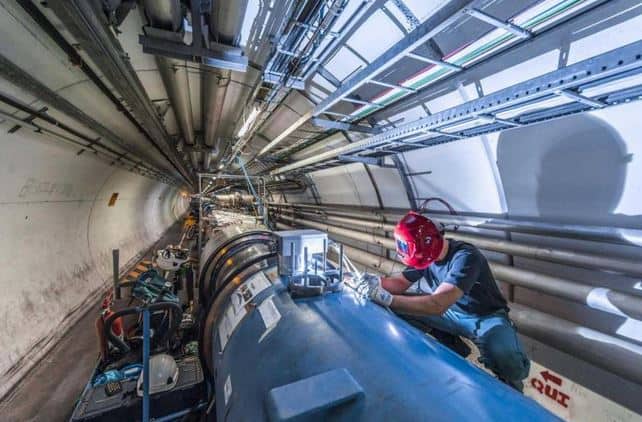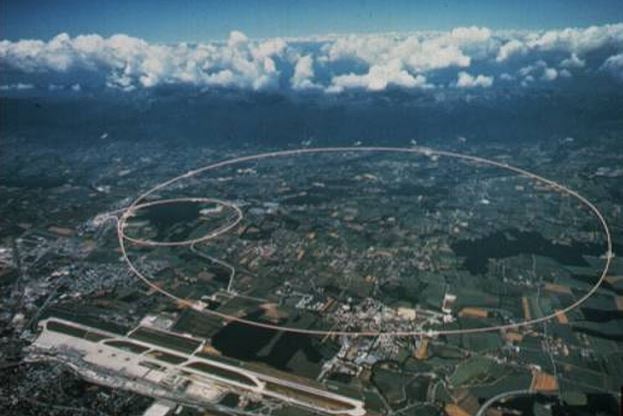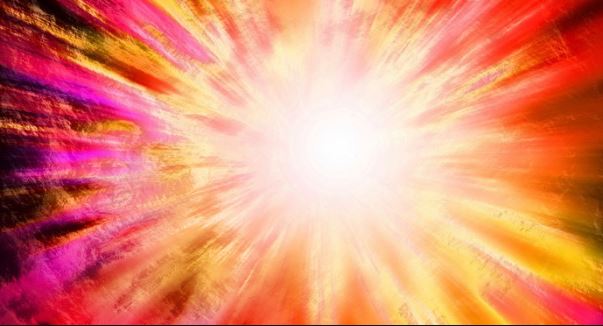The Large Hadron Collider, which is much more powerful now, restarted on Sunday. With its much mightier bang compared to two years ago when it was switched off for maintenance and a major upgrade, scientists hope to create dark matter and possibly prove the Big Bang never happened.
When operating at full force, the Large Hadron Collider’s (LHC’s) collision energy will be 13 TeV (Terraelectron-Volts), which is about 65% more than its previous 8 TeV.
Swiss-based CERN (Conseil Européen pour la Recherche Nucléaire – European Council for Nuclear Research), which created and operates the LHC, said the particle collider’s restart, which should have occurred in March, was delayed by an intermittent short circuit in one of its magnet circuits.

The LHC has undergone two years of maintenance plus a major upgrade. (Image: CERN)
The short circuit was identified on March 21st, and was initially expected to delay the restart by possibly several weeks.
According to a statement by CERN, the first beams will probably be circulating some time during this weekend or Monday at the latest. Achieving a restart on Sunday was seen as a great success.
Director for Accelerators and Technology at CERN, Frédérick Bordry, said:
“We are confident of being able to restart the machine over the weekend, as all of the tests performed so far have been successful.”
As soon as the LHC and the whole accelerator chain are working, operators will work in shifts in the control room night and day. They will attempt to circulate beams in the world’s largest machine in both directions, at their injection of energy of 450 GeV the moment all the lights are green.
What is the Large Hadron Collider?
For the past two years, the LHC has been undergoing maintenance and a major upgrade, making it immensely more powerful than it was in 2013.

LHC lies in a tunnel 17 miles (27 kilometres) in circumference about 574 feet (175 metres) beneath the French-Swiss border near Geneva. (Image: CERN)
It is a particle accelerator, i.e. it accelerates subatomic particles at super high speed (near light speed) by means of electromagnetic or electric fields.
The accelerated particles crash into other particles, either as a research technique or a way to generate high-energy X-rays and gamma rays.
LHC has already proved that the Higgs boson exists, a subatomic particle that had been only known about in theory and is sometimes dubbed the ‘God Particle’.
Scientists say there are probably more Higgs bosons, maybe a whole family of them (five types). They hope the now more powerful LHC will also be able to prove their existence.
Create dark matter
With a much more powerful LHC, scientists will try to create dark matter.
Dark matter refers to material in space scientists are unable to detect by their emitted radiation but know is there because of its gravity and effect on visible matter, such as galaxies and stars.
Astrophysicists estimate that up to 95% of the Universe consists of dark matter. They will look for signs of extra dimensions in time and space and find a way to fit gravity into our current model of particle physics.
Scientists believe the LHC may help them discover completely new particles, potentially revolutionizing how we understand the Universe.
LHC may debunk Big Bang theory
CERN scientists say the LHC could prove the existence of parallel universes, thus showing that the Big Bang (birth of our Universe) never occurred.
If they find miniature black holes, they might reveal the existence of a parallel universe.

In a ‘Rainbow’ Universe the Big Bang never happened.
If these holes are found at a specific energy, it could prove the debated theory of ‘rainbow gravity’, which suggests that the Universe goes back in time infinitely with no Big Bang, i.e. the Universe has always existed and was never ‘born’.
The rainbow gravity theory was put forward to reconcile Einstein’s theory of general relativity. It takes its name from the theory that gravity’s effect on the cosmos is felt differently by varying wavelengths of light.
BBC Video – Large Hadron Collider
